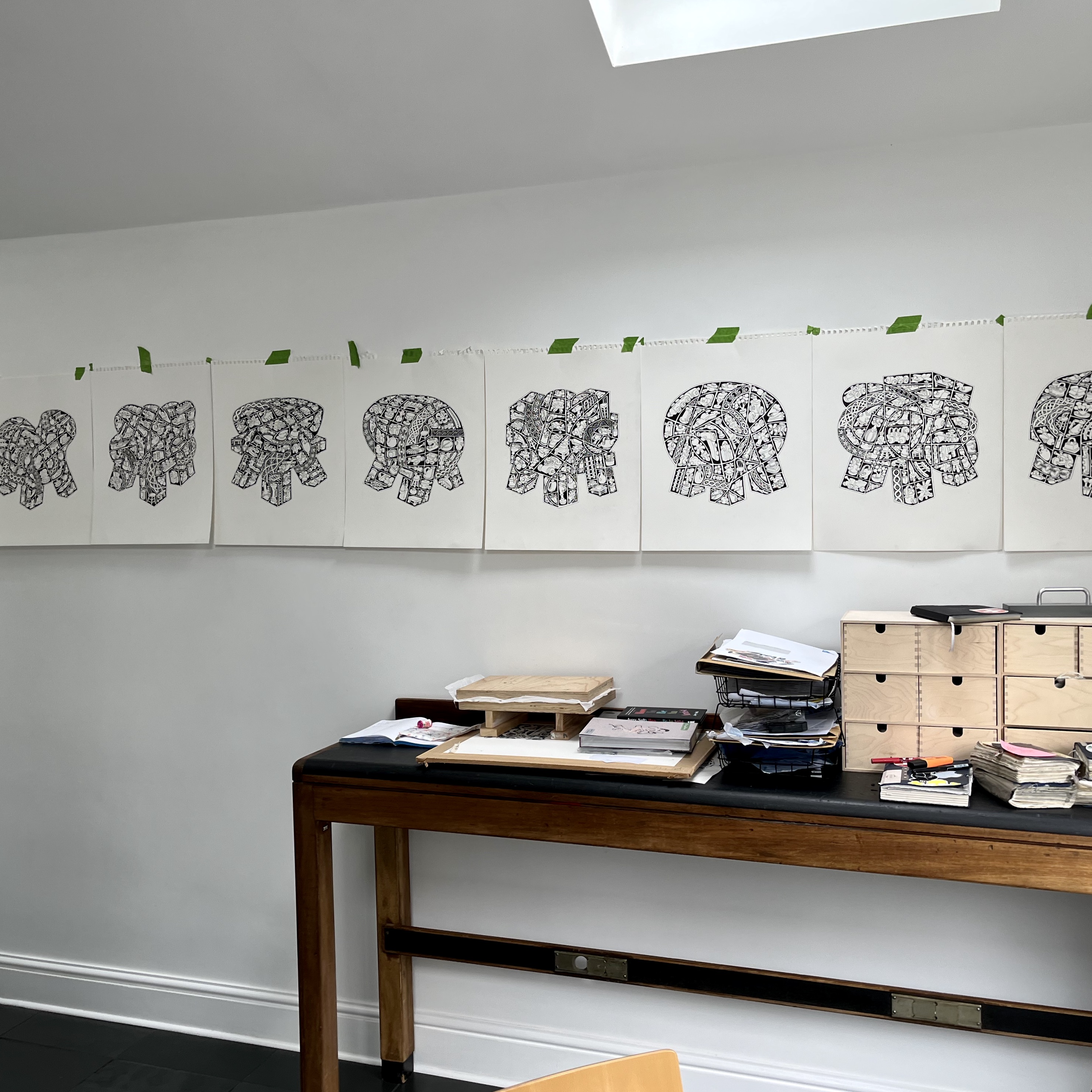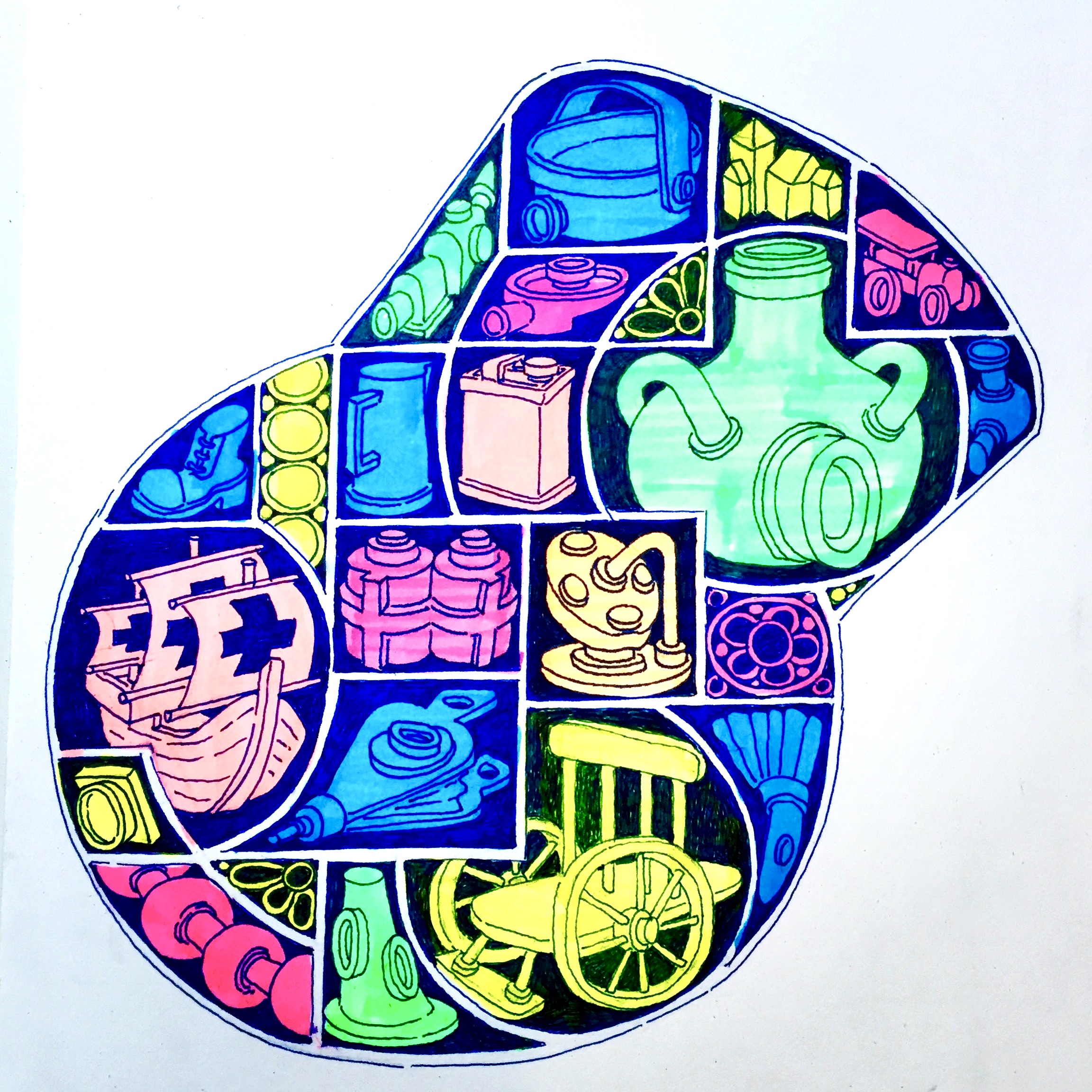
Shaped or Object Narrative is a term I have continued to use that has developed out of an approach and concurrent processes of drawing, recording, and responding developed in the sketchbook over the last ten to fifteen years. The sketchbook operates very much like a virtual space to both engage through drawing and to consider how it operates and uses paradigms associated with the physical traditions of the studio, gallery, or site. The drawings in the sketchbook intentionally and consistently explore and critique sculptural and three-dimensional archetypal systems, schematic languages, devices, and methodologies. The systems I employ are as disparate and diverse as perspectival, cartographic, illusionary, architectural and technical, used collectively and in isolation.






A key tool in developing the outcomes or visual collections within the sketchbook archive is using a prescribed grid and graphic framework mapped out in advance. This acts as a combination of scaffold, lens or filter to engage with the primary act of drawing. The grids that have been developed draw directly from a range of linear graphic traditions and languages – cartography, architectural layouts, technical or engineering drawings, diagrammatic and graphic novels and the illuminated manuscript. All of these inhabit the speculative, the observed, and read and/or recorded, becoming physical and hypothetical simultaneously.
The grids have become much more than just arbitrary or supportive compositional devices. They bring forms and identities to the creative and presentative process. The duality of identities and layout inherent in the framing and development of the Object Narratives was an essential driver in bringing work out of the sketchbook and onto paper in many ways a collection of sequential series and collections.





The process stemmed from developing or generating a defined set of grid-like patterns, frameworks or scaffolds. These were very much live spaces returned to and revisited at different points in the construction of the individual series. The shaped compartments within the overall latticework framework dictated the physical or formal parameters of the object imagined and drawn within. This combination of constraints combines the observed taxonomy, remembered and continually revisited, leading to or ensuring the engagement with immediacy and happenstance more commonly associated with sketchbook practice.











There have been four main series of shaped narratives developed over the last four years. The first were two series in 2018 – Blue and White Shaped Narratives and Coloured Shaped Narratives. The second series re-engaged with this approach in 2021 – Three-Legged Narratives and Small Object Narratives. The works explore and integrate notions around the sense of shapes within shapes, objects within objects and the relationships and hierarchies between the constituent parts. The icons or motifs drawn from memory, experience or observation, are initiated and directed by the pre-drawn spaces akin more with practices associated with installation and sculpture than drawing. For example, the motorcycle within the lungs and the sofa within the house are expected and unexpected at the same time as both motorcycle and sofa, relied on the generic pictorial silhouette, as a reference and anchor, as an applied space and apparent random happenstance regarding form, function and metamorphosis of fortune.


















The drawings have common links throughout the four series. Primarily the monochromatic blocking or inking out redundant or irrelevant space or information, isolating the object in its own bespoke universe within the larger multiverse or collective space of a vase, jug, house or a legged entity. Though a predetermined graphic space dictates the objects in part, the rationale or storyline appears randomised or now in need of a key or legend to interpret or understand. This is an approach not dissimilar from the techniques employed by comic, graphic novel artists and illustrators. Concepts around the juxtaposition of narrative illustrations pervade throughout the works and start discussions and dilemmas around authorship, storyline, collective identities, and taxonomies.








